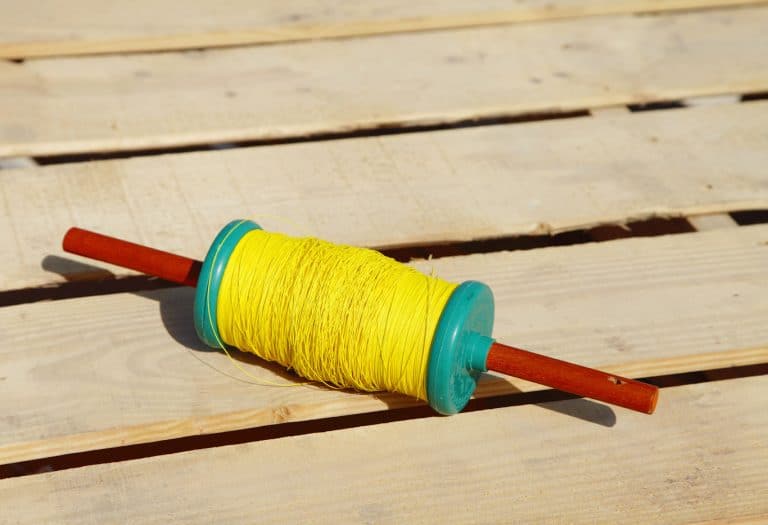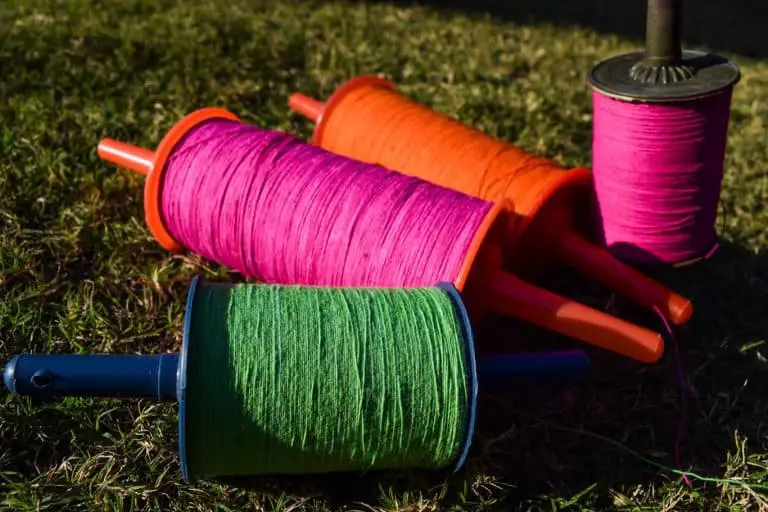Why Is A Kite Not A Parallelogram?
Why is a kite not a parallelogram? Kites can come in different shapes and sizes, mathematically speaking. However, the kite (toy) can also come in various colors, forms, and sizes. Why is the kite not a parallelogram? If so, how can kites, both the Euclidian shape and the toy, be considered one?
A kite can be a parallelogram when referring to the toy, albeit it does not appear conventional. Mathematically speaking, although a kite is not a parallelogram most of the time, there are certain situations where one considers a kite as such. A kite can be a parallelogram if it is also a rhombus.
What is a kite, and how does it become a parallelogram? Moreover, what are the shapes that a toy kite can fly on? Which of these shapes are the easiest to maneuver and fly?
How Do You Know If A Kite Is Parallelogram?
Why is a kite not a parallelogram? According to Euclidean geometry, a kite is a four-sided shape with two pairs of equal-length sides. However, unlike the parallelogram, which shares a similar definition, kites have a group of equal-length sides adjacent to each other. On the other hand, parallelograms have a pair of equal-length sides parallel or opposite to each other. (source)
Indeed, parallelograms and kites are different– there is no going around it. One has sides equal to its adjacent, while one has sides similar to its opposite or parallel (hence, parallelogram). However, there are times wherein a shape is both a parallelogram and a kite. It all has something to do with the “rhombus” shape.
What Is A Rhombus?
A rhombus is any four-sided shape with its sides equal to each other. A good example is a square, where all sides are the same length. However, not all rhombuses are squares, as squares require all sides to be the same and all the angles to be 90-degrees, which is a requirement that rhombuses do not have. As we go back to kites, we can conclude that a kite can identify as a rhombus as long as all the sides have the same length. (source)
Now the exciting thing is that rhombuses also identify as parallelograms. Since rhombuses have all sides equal, we can infer that parallelograms are also rhombuses since rhombuses also have two pairs of sides parallel to each other. When a kite is a rhombus, that said kite is also a parallelogram, proof provided via the transitive mathematical property (if a=b, and b=c, then a=c).
Could Kite Be A Trapezoid?
Before we proceed to the next topic and leave “why is a kite not a parallelogram”, let us first discuss the issue of trapezoids and kites. Trapezoids are less similar to kites than kites are similar to parallelograms.
By definition, trapezoids or trapezium are two-dimensional four-sided shapes with one pair of parallel sides. They are commonly associated with a hill-like (also mountain-like) form. (source)
When we talk about the exclusive definition of trapezoids and kites, they will never be the same. However, referring to their inclusive meaning, we can imply that all rhombuses are kites. As such, all rhombuses that are categorized as trapezoids are, in turn, also kites.
What Are The Best Shapes For A Kite?
As said earlier, kites can come in various forms, shapes, and sizes; granted, we are talking about the kite, the toy, and not the kite with the euclidian body. In a sense, you can truly envision what your kite should be in the form of– it can be an animal, a dragon perhaps, or it can be cultural, say, in the form of the statue of liberty.
However, some of these forms and shapes can be better for flying than others. Some generate more lift than others, while some are stabler, or if not, easier to maneuver. As such, what are the best shapes for kites?
The Best Shapes For Kites
- The delta kite shape (almost triangle shape)
- Diamond kite
- Square kite
- Power kites
But before talking about lift and ease of maneuver and such, let’s talk about what flight lift is?
How Does A Kite Fly?
It’s incredible how kites can have sustained airtime in their natural form made with primitive materials (a wooden frame, a nylon body, and a string). How can such a simple craft fly so smoothly and without much hassle? Why do kites need so few materials to fly, and yet it takes a gazillion working and moving parts to be able to fly?
There are four concepts to understand regarding how a kite flies. These are the following:
What Makes A Kite Fly (And Not Fly)?
- lift
- weight
- drag
- thrust
What Is Lift In Kite Flying?
These four variables that affect the ability of a kite to fly are crucial in knowing why a kite can float. The first concept we will learn about is lift.
Lift
Theoretically speaking, the lift is the upward force that pushes a kite into the air. The air in motion over the body of a kite creates lift. Lift functions as such: when your kite faces forward, the air flowing against its direction will go above or below the kite. The air below the kite pushes the kite upward, thus creating lift. (source)
Weight
The second of the four variables is weight. Weight is the downward force pushing your kite to the ground. The power generates a downward tendency through the gravitational pull of the Earth, which in turn pulls the kite downward.
Lift and weight are counteracting variables. If the force generated by the weight is greater than the lift, then your kite will not fly. Meanwhile, if the power of lift is greater than the weight’s gravitational pull, the kite will soar.
Thrust
The third variable is thrust. Airplanes use thrust through their engines, but in the case of kites that do not utilize engines, they generate thrust through the string. One generates thrust through the tension of the line and the motion of the air. The thrust propels the kite to a direction of movement.
Drag
Drag, on the other hand, is the polar opposite of push. It opposes the kite’s motion or direction. The difference in air pressure between the front and back of the kite and the friction of the air flowing over the kite’s surface causes drag. One must balance the four forces for a kite to fly steadily. Lift must equal weight, and thrust must equal drag.
Delta Shape Kite
Delta kites are almost the ideal triangle kite shape. What makes the delta kite shape great is that it is straightforward to assemble and is a great summertime project. Moreover, it comes in a variety of colors and motifs.
Another point that makes delta kites great is that it remains stable in most weather conditions. It also comes in small sizes that are great for use when children maneuver them.
Diamond Kites
The diamond kite is an incredibly stable kite that can maintain flight easily. Albeit not as conventional and easy to use as the delta kite, one can use it with kids and adults alike.
Aside from why a kite is not a parallelogram, you can also consider why diamonds are parallelograms but can be an incredibly viable variant of kites.
Square Kites
The rectangle kite is a traditional kite used commonly in Japan. Because of its shape, it can easily hold illustrations as they do so during the Japanese Edo period. However, because the kite has an extensive surface area, it can have a troublesome drag. (source)
The traditional Edo rectangular kite is made of washi paper, taking inspiration from ukiyo-e. Traditionally, they paint these kites with bold motifs that make the sky ever vibrant. These can depict legendary heroes, famous kabuki actors, and ideographs.
Power Kites
Power kites are not a kite shape, but rather, they are a type of kite that generates a lot of lift. Power kites are kites that enable a human to “fly.” Also called a traction kite, a power kite is a large kite designed to provide significant pull to the user.
Most power kites take the form of a foil, resembling the parafoil kite. The foil power kite can generate a lot of lift due to its design, which utilizes a cell infrastructure open at the front to create an aerofoil section.
If you do not know yet, aerofoils are a shape preferred by most aerodynamic systems. An airfoil structure with curved surfaces provides the best lift-to-drag ratio in flight. Most utilize it as the fundamental shape of most aircraft’s wings, fins, and horizontal stabilizers. (source)
As such, foil kites are the most efficient forms of power kites. Multiple research studies are studying the efficiency of foil kites in generating electrical power. (source)
Airfoil: What Makes It Special?
Now that we have answered the primary question of why a kite is not a parallelogram let us look at one of the most exciting shapes for generating a lot of lift: the airfoil (also called aerofoil).
Aside from power kites, specifically the foil kite, airfoils are found in many different components that you may not expect. Turbofan blades, the sailboat’s sail, edges of a turbine, propellers, and rotors are a few examples of airfoils in mand made objects. Not only that, but airfoils are also found in nature, free from human intervention. The dolphin flipper fin and the dragon fly’s wings demonstrate the application of airfoil in generating lift.
Indeed a scientific marvel, airfoils are what makes us able to fly using planes. Commercial airlines require airfoil to generate lift enough to counter the plane’s weight, producing a counteracting gravitational pull.
Why Is The Airfoil So Effective In Producing Lift?
Yes, airfoils are efficient in producing lift, but why? Well, here’s a step-by-step explanation of why:
How The Airfoil Produces A Lot Of Lift
- Often, one can attribute the lift generated by the airfoil to its angle of attack.
- Depending on the needs (i.e., kite, supersonic transportation, subsonic planes), an airfoil may vary in form, albeit identified as one shape.
- However, when oriented at a proper angle using the appropriate shape, the airfoil deflects the air attacking the front of the airfoil downward. Typically, this air must exert force on the opposite side of where the object in flight is approaching.
- The air deflected “lifts” the airfoil as it goes below the shape (i.e., the wing of a plane, the cells of a foil kite). Think of such as a boat, but instead of water, it uses air. As a vessel moves in a specific direction, water approaching the bow (the front of the ship) goes below the boat. This air motion generates an aerodynamic force with the four components we talked about earlier: lift, drag, weight, and thrust.
Shapes Of A Kite
This section is probably the third time we’ve talked about this, but kites can come in different shapes. If you’re not too worried about the lift and weight, and if you are comfortable enough to handle hard-to-control kites, we’ve got some exciting kite shapes to show you.
Interesting Shapes Of Kites
- Flat kites
- Dragon kites
- Box kite
- Parafoil kite
- Sled kites
- Hybrid kites
Flat Kites
Flat kites are not exclusively a shape but rather are a form factor. Unlike the other kites we will discuss later, which come in three-dimensional designs, flat kites are a special breed of kites commonly seen in euclidian geometry forms.
Think of the following shapes: squares, circles, triangles, and the delta kite. These kite shapes are under the umbrella term of “flat kite.” These kites have come in two-dimensional forms with no structure to showcase depth.
Flat kites can also be composite, encompassing multiple kites at once. Commonly, square kites are tied together to form a caterpillar-like form.
Dragon Kites
Dragon kites are a particular type of kite typically flown over East and Southeast Asia. Many cultures use them to celebrate the Chinese New Year.
Like some flat kites, most dragon kites are composite, meaning they are many kites tied together. Dragon kites have a head that showcases the head of the dragon, and the tails, which are composite kites, all in a three-dimensional shape. However, unlike most flat kites, composite dragon kites are always compulsory. The reasoning behind this necessity is that dragon kites are incredibly long.
Box Kites
Box kites are another type of three-dimensional kite that sports a peculiar design language. Also called cellular kites due to their cell-like design (not to be confused with parafoils), box kites typically do not have a tail and have an opening on each end, one at the end and another on the rear.
Although called box kites, they do not have to be exclusively cubes. Many come in different shapes, such as hexagonal, tetrahedral, and even triangular patterns. They typically sport tons of frames that keep the kite its shape.
Box kites are hard to make, needing a lot of assemblies compared to other kites. Consequently, box kites are known for difficulty in navigating and maneuvering. However, what makes most box kite enthusiasts psyched for the project is that box kites typically are amazing to look at and typically steal the show.
Parafoil Kites
Foil kites are a specific type of kite initially roughly based on the design language of the parafoil. These kites consist of a series of cells that run fore and aft, with some or all of them open at the front to enable air to inflate the kite and form an aerofoil section, creating a significant lift. Because of the amount of power these kites can produce, one may use them for various activities such as leisure kiting, kite-energy systems, airborne wind energy, kite landboarding, snowkiting, and kitesurfing.
Sled Kites
A sled kite is a form of kite that predates the contemporary foil kite design. Furthermore, this kite helped pave the way for a class of kites known as “semi-rigid.” These kites sport a unibody design, which later created problems in its development and adaptation phase.
The sled kite was designed and patented in the 1950s by an American named William Allison. At the time, kites featured simply vertical spars. Because of such design, design flaws existed that would affect the kite’s ability to fly. Consequently, the kite would curl into a semi-circle because of the heavy drag caused by high wind pressure opposing the direction of the sled kite.
Hybrid Kites
Due to new industrial machinery that helped spark more innovative and less conventional shapes and designs, manufacturers can now create kites based on the needs and wants of a consumer base. These kites, which do not adhere to traditional design languages, are called hybrid kites. Hybrid kites are a type that manufacturers create, most often specifically for a particular purpose. By combining basic shapes and design philosophies, kite companies have created this new generation of kites that help target a niche audience.
Summary
Kites are a euclidian geometry-shape with two pairs of congruent sides to their adjacent. On the other hand, the parallelogram has two pairs of congruent sides parallel. Meanwhile, a trapezoid is a quadrilateral with one pair of parallel sides. A kite can only be a trapezoid or a parallelogram when it is under the classification of a rhombus.
A rhombus is a shape that has all sides equal to each other. It is similar to a square, but a square must have all four angles be ninety degrees. Meanwhile, a rhombus is not limited to such a specification.
Let’s talk about kites (the toy). Most two-dimensional kites, especially delta kites, are easy to fly and have a significant lift while lessening weight. For a kite to fly, the aerodynamic forces, the lift, the weight, the drag, and the thrust, must all be appropriately balanced.
If you are not concerned with the ease of using a kite or the amount of lift produced, unconventional kites such as the box and sled kites may be a spectacle to watch for you.






